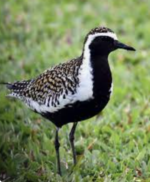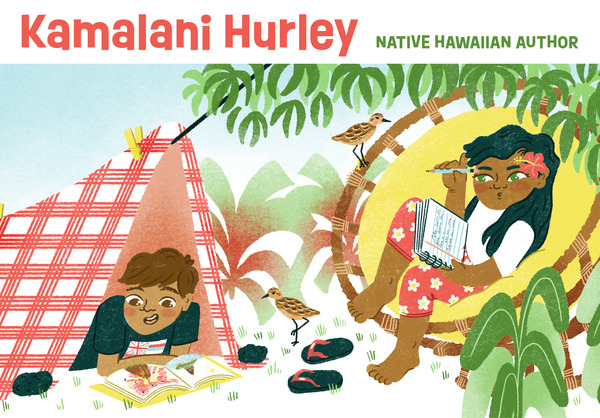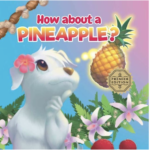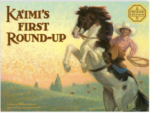Hawaiʻi-based author Vera Arita has spent her life helping special-needs children to succeed. Her childrenʻs books focus on Hawaiʻi themes and encourage children to delight in the world around them.
 Mahalo, Vera, for allowing me to feature you on my blog. For those who haven’t met you, could you please tell us a little about yourself?
Mahalo, Vera, for allowing me to feature you on my blog. For those who haven’t met you, could you please tell us a little about yourself?
Aloha all! I’m Vera Arita, and I am a retired special education teacher. I taught for 32 years, and then I retired from Mililani Ike Elementary in Central Oʻahu in 2016. I am currently a half time field service instructor at the University of Hawaiʻi at Manoa, and I help students learn how to be special education teachers. I live in Mililani with my husband, Neal, and we have two sons/two daughters-in-laws, two grandsons and a granddaughter.
Where did you grow up? What high school did you grad from?
I grew up in Waipahu and went to Waipahu Elementary, Intermediate and High School.
Go, Marauders! Who is your biggest supporter?
For sure my husband, Neal, our sons and extended family! I also have great teacher and church friends who come out full force to support my book signings.
Why did you become a writer? What inspired you to write for children?
 In my teaching career, I always had a dream to write children’s books to share the love, care and life lessons I’d grown to appreciate. I believe the inspiration also comes through my faith in Christ. My first book, All Around the Islands, came out in 2005. I dedicated my first book to my parents, Bolo and Eileen Soneda, because my dad was very ill, and Iʻd promised him that I would write a book someday.
In my teaching career, I always had a dream to write children’s books to share the love, care and life lessons I’d grown to appreciate. I believe the inspiration also comes through my faith in Christ. My first book, All Around the Islands, came out in 2005. I dedicated my first book to my parents, Bolo and Eileen Soneda, because my dad was very ill, and Iʻd promised him that I would write a book someday.
What do you enjoy most about writing for kids? What are some of your greatest challenges in writing for children?
 I think having kids learn about animals or the sounds of the letters in rhyme is very rewarding. My fourth book, Alphabet Hukilau, was written on an iPad! I was just kicking around with the idea of a net catching letters instead of sea animals. At the back of the book there is non-fiction information of the sea animals since much of our content standards deals with reading non-fiction books.
I think having kids learn about animals or the sounds of the letters in rhyme is very rewarding. My fourth book, Alphabet Hukilau, was written on an iPad! I was just kicking around with the idea of a net catching letters instead of sea animals. At the back of the book there is non-fiction information of the sea animals since much of our content standards deals with reading non-fiction books.
The challenge for any author is finding a publishing company who is willing to risk creating a book with your words.
What are your hopes and dreams for the year and beyond in terms of your writing career and what you would like to see published in the future?
Teaching children has been, and is, my passion, and currently my publisher is considering a counting book that is quite whimsical.
There are not a lot of stories for or by Native Hawaiians and Pacific Islanders. Why do you think that is? What do you think we can do the change that?
Again, you have to find a publishing company who believes in your writing. I believe that in Hawaii, most publishers have to cater to the tourist market for their books to sell. I’m hoping that my new book, which promotes character education, will be in all schools in Hawaii and nationwide.
Do you have a website? Are you on social media? Do you do school visits?
I do not currently have a website, but I am on Instagram Verasonedaarita or you can email me. I do school visits where I share the writing process and share sketches of how a book is formed. I often browse through reviews on Amazon of my books and find it very humbling to get such rave reviews.
What advice do you have for aspiring writers?
Never give up on your dreams. You have to reach out to many publishers and not get discouraged. My publisher told me she receives submissions nearly every day, and few are picked up to be published.
Can you share a bit of your current work?
Alohasaurus is a story that I think many people can really relate to. It’s about a dinosaur who has no friends because he looks different, and he sounds different. In  many ways it’s like my brother, Mike, who, was socially“different.” Mike was born with mental and physical challenges. Sadly, Mike recently passed away in early September 2022, so he did not get a chance to see the book.
many ways it’s like my brother, Mike, who, was socially“different.” Mike was born with mental and physical challenges. Sadly, Mike recently passed away in early September 2022, so he did not get a chance to see the book.
In the story, a group of curious and courageous children befriend the dinosaur, and in turn, he teaches them ways to be kind and how to model aloha. Through their newly found friendship, they name him “Alohasaurus.”
As a substitute teacher, I’ve been test marketing the draft of the book with students, and it has gotten “5 star” reviews from them! I have even shared the book with some middle school students, and they really liked the story. Their encouragement has been uplifting and so precious.
Which of your books did you have the most fun writing? Which was the most challenging?
 My third book, Animals Sing Aloha. It is a phonics book that teaches how to write and sound out the alphabets correctly. It was a surprise because the draft was literally written on the back of an anniversary card while I was in a Maui hotel lobby on vacation. I tell students that when inspiration hits, you have to be ready to write! That book has been my best-selling book to date.
My third book, Animals Sing Aloha. It is a phonics book that teaches how to write and sound out the alphabets correctly. It was a surprise because the draft was literally written on the back of an anniversary card while I was in a Maui hotel lobby on vacation. I tell students that when inspiration hits, you have to be ready to write! That book has been my best-selling book to date.
Most challenging is Alohasaurus because it’s been on the back burner since 2007! I wrote the draft on the back of sermon notes in church and always felt that this would be a great book; however, the publisher wisely was waiting for the right time to create it — and now is the time!
What beliefs are your books challenging?
They challenge peoples’ beliefs that you have to look and act like everyone else to be successful. The lesson to the readers is that you can be a success if you are kind to others, speak respectfully, work hard and are a team player.
What’s your experience with publishing your books?
I learned that when you sign a contract, all your future manuscripts go to them first and if they reject it, then you are free to go to another publisher. Also, the publisher can edit your writing if they feel it flows better a different way. There needs to be trust that the publisher knows what it takes for a successful book; however, there may be times when you must persevere and not give up on a rejected book.
Where do you get ideas for your books?
 It seems that difficult family times provided inspiration for me to write. In 2006 my brother, Mike, had a seizure and hit his head very hard and became brain-damaged. While he was in an extended coma, I promised to write another book and dedicate it to him. Thus, Can you Catch a Coqui Frog was written.
It seems that difficult family times provided inspiration for me to write. In 2006 my brother, Mike, had a seizure and hit his head very hard and became brain-damaged. While he was in an extended coma, I promised to write another book and dedicate it to him. Thus, Can you Catch a Coqui Frog was written.
Authors write to persuade, inform or entertain. My books fall between informing and entertaining. As a teacher I couldn’t find a book that mentioned all eight Hawaiian Islands, so that’s how All Around the Islands came about. Alohasaurus mentions different kinds of caring for people and for our ʻāina.
Which characters do you relate with easily? Why?
In fictional stories, I relate to the character who really aren’t outstanding, but through much determination and hard work, they are able to achieve a lot. One of my favorite bible verses is Philippians 4:13: I can do all things through Christ Jesus. A good example of this is that I recently decided to enter the Honolulu Marathon with three months left to train. I did it 10 years ago but trained for a year back then. With the Lord’s help, I can do it again.
Mahalo nui, Vera! To contact Vera Arita and learn more about her books, please follow her Verasonedaarita in Instagram.
 First there are three, for a reason. Three is my favorite number. Lots of things come in threes — three wishes, the triple crown, three parts of an atom, three-part story structure, three musketeers, junkenpo — but most important to me are my three daughters.
First there are three, for a reason. Three is my favorite number. Lots of things come in threes — three wishes, the triple crown, three parts of an atom, three-part story structure, three musketeers, junkenpo — but most important to me are my three daughters. Kōlea tend to return to the same Hawaiʻi neighborhoods each year, and Iʻm always happy when I see them on our Central Oʻahu street. I can tell theyʻre around when I hear their distinctive keek-KEEK!
Kōlea tend to return to the same Hawaiʻi neighborhoods each year, and Iʻm always happy when I see them on our Central Oʻahu street. I can tell theyʻre around when I hear their distinctive keek-KEEK!




 I think having kids learn about animals or the sounds of the letters in rhyme is very rewarding. My fourth book, Alphabet Hukilau, was written on an iPad! I was just kicking around with the idea of a net catching letters instead of sea animals. At the back of the book there is non-fiction information of the sea animals since much of our content standards deals with reading non-fiction books.
I think having kids learn about animals or the sounds of the letters in rhyme is very rewarding. My fourth book, Alphabet Hukilau, was written on an iPad! I was just kicking around with the idea of a net catching letters instead of sea animals. At the back of the book there is non-fiction information of the sea animals since much of our content standards deals with reading non-fiction books.  many ways it’s like my brother, Mike, who, was socially“different.” Mike was born with mental and physical challenges. Sadly, Mike recently passed away in early September 2022, so he did not get a chance to see the book.
many ways it’s like my brother, Mike, who, was socially“different.” Mike was born with mental and physical challenges. Sadly, Mike recently passed away in early September 2022, so he did not get a chance to see the book.








 week with my friend, author Brandi-Ann Uyemura. Writing coach, blogger, coach and author, Brandi does it all. Her articles and essays inspire hope, courage and compassion. An Asian American who grew up in Hawaiʻi, Brandi brings a much needed authentic voice, not just for Asian kids in Hawaiʻi but for all kids, everywhere.
week with my friend, author Brandi-Ann Uyemura. Writing coach, blogger, coach and author, Brandi does it all. Her articles and essays inspire hope, courage and compassion. An Asian American who grew up in Hawaiʻi, Brandi brings a much needed authentic voice, not just for Asian kids in Hawaiʻi but for all kids, everywhere.


 I really enjoy when the kids connect with my stories. Like in Too Many Mangoes, perhaps they have mangoes that they have shared with their neighbors or maybe they have a hard-of-hearing grandpa too. I am in awe when someone says that my book is one of their favorites. Never in my wildest dreams did I think that would ever happen! It makes me feel so proud that I can bring joy to others in my own little way. My greatest challenge would be coming up with an idea for a story. I want all of my stories to be upbeat and positive. I want to give a good message to the children and make them smile.
I really enjoy when the kids connect with my stories. Like in Too Many Mangoes, perhaps they have mangoes that they have shared with their neighbors or maybe they have a hard-of-hearing grandpa too. I am in awe when someone says that my book is one of their favorites. Never in my wildest dreams did I think that would ever happen! It makes me feel so proud that I can bring joy to others in my own little way. My greatest challenge would be coming up with an idea for a story. I want all of my stories to be upbeat and positive. I want to give a good message to the children and make them smile. 

 Honesty, I believe my inspiration comes from “above.” Something happens and the title pops in my head and the writing part comes easy after that. For example, one day my neighbor came to our house and asked if we saw her pet turtle that they lost. I thought to myself, Honu, Honu, Where are You? and then wrote the rhyme for that playful story about baby dolphin looking for his friend, Honu, the sea turtle. Yuko Green who cleverly illustrated the book using flaps to help hide the turtles in this story.
Honesty, I believe my inspiration comes from “above.” Something happens and the title pops in my head and the writing part comes easy after that. For example, one day my neighbor came to our house and asked if we saw her pet turtle that they lost. I thought to myself, Honu, Honu, Where are You? and then wrote the rhyme for that playful story about baby dolphin looking for his friend, Honu, the sea turtle. Yuko Green who cleverly illustrated the book using flaps to help hide the turtles in this story. 






